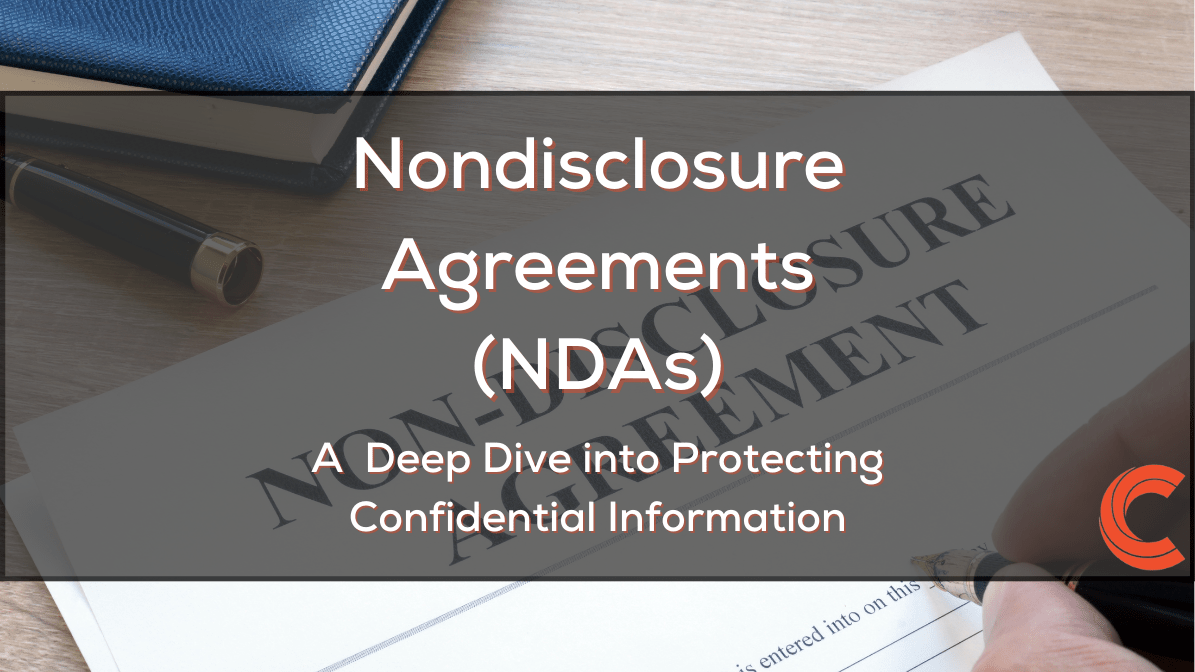In the realm of business, the exchange of confidential information is often a necessity, whether in negotiations, collaborations, or strategic partnerships. However, with the need for sharing comes the imperative to protect sensitive data. Nondisclosure Agreements (NDAs) serve as the guardians of confidential information, creating a legal framework that ensures confidentiality is maintained. In this comprehensive exploration, we will dive deep into the world of NDAs, unraveling their intricacies, and shedding light on how these agreements play a pivotal role in safeguarding valuable business secrets.
1. Defining Nondisclosure Agreements (NDAs)
Core Purpose:
NDAs, also known as confidentiality agreements, are legal contracts that establish a confidential relationship between parties. The primary purpose is to ensure that one party does not disclose sensitive information shared by the other.
Key Components:
- Identification of Parties: Clearly define who the disclosing and receiving parties are.
- Definition of Confidential Information: Specify the nature of the information that is considered confidential.
- Obligations of the Receiving Party: Outline the responsibilities and restrictions imposed on the party receiving the confidential information.
- Duration of Confidentiality: Clearly state the time frame during which a party must to maintain confidentiality.
2. Safeguarding Confidential Information
Types of Information Protected:
NDAs can cover a broad range of information, including trade secrets, business plans, financial data, technological innovations, and any proprietary information critical to a business’s success.
Scope of Protection:
The scope of protection should be clearly defined. NDAs can be mutual, where both parties exchange confidential information, or unilateral, where only one party discloses sensitive information.
3. Best Practices for NDA Implementation
Customization for Specific Situations:
NDAs are not one-size-fits-all. Tailor agreements to the specific needs and circumstances of each situation, ensuring that they address the unique nuances of the information being shared.
Clear and Precise Language:
Avoid ambiguity in the language used in NDAs. Clear and precise wording helps prevent misunderstandings and disputes over the interpretation of the agreement.
Consideration and Reciprocity:
In many jurisdictions, for an NDA to be legally binding, there must be consideration (something of value exchanged). Ensure that both parties receive some benefit, creating a mutual commitment to the confidentiality obligations.
4. Enforcing NDAs: Legal Ramifications
Breach Consequences:
Clearly outline the consequences of breaching the NDA. Consequences may include monetary damages, injunctive relief (a court order preventing further disclosure), or other remedies.
Jurisdiction and Governing Law:
Specify the jurisdiction and governing law that will interpret and enforce the NDA. This ensures clarity and predictability in the event of legal action.
5. Navigating Challenges and Pitfalls
Exclusions from Confidentiality:
Clearly outline any exceptions to confidentiality, such as information that is already public knowledge or independently developed by the receiving party.
Employee Training:
Educate employees on the importance of NDAs and the confidential nature of certain information. Implementing robust training programs reduces the risk of unintentional breaches.
6. Technological Advancements and NDAs
Digital Security Measures:
As technology evolves, integrating digital security measures into Nondisclosure Agreements becomes crucial. Encryption and secure data storage enhance the protection of confidential information.
Electronic Signatures:
Explore the use of electronic signatures for NDA execution. Many jurisdictions recognize electronic signatures as legally binding, streamlining the signing process.
7. Regular Review and Updates
Adaptation to Changing Circumstances:
Regularly review and update NDAs to ensure they align with changing business landscapes, technological advancements, and legal requirements.
Document Retention Policies:
Implement document retention policies to manage confidential information systematically. Knowing when to dispose of information reduces the risk of accidental disclosure.
Conclusion: Harnessing the Power of NDAs
In the fast-paced world of business, where information is a valuable currency, NDAs stand as stalwart protectors of confidential information. By delving into the nuances of NDAs, businesses can navigate the delicate balance between collaboration and protection. For expert guidance on crafting, implementing, and enforcing effective NDAs, contact Carbon Law Group. Our experienced legal professionals are dedicated to safeguarding your business secrets, ensuring that your confidential information remains secure in an ever-evolving business landscape. Let us be your trusted partner in harnessing the power of NDAs—where protection meets collaboration.





